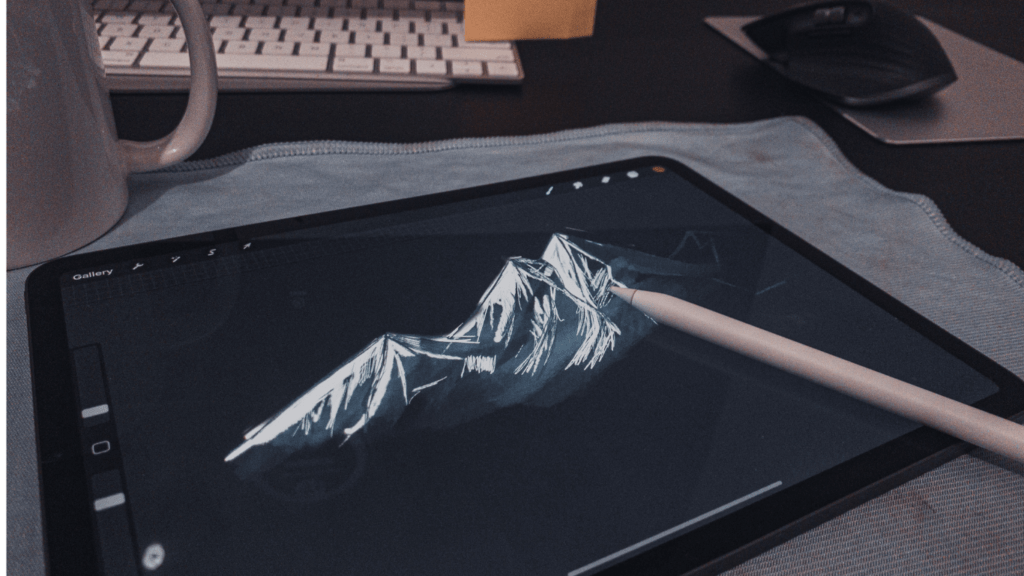Overview of NFTs and Digital Art
Non-fungible tokens, or NFTs, revolutionize digital ownership. Unlike cryptocurrencies, each NFT represents a unique asset, making them ideal for digital art. Artists tokenize artwork on blockchain, ensuring originality and ownership proof.
Digital art spans images, animations, music, and more. Blockchain technology enables artists to sell digital creations transparently. Collectors gain exclusive ownership verified through smart contracts, which automate transactions and guarantee authenticity.
In 2021, NFT sales surged, with platforms like OpenSea reporting billions in transactions. Prominent artists and celebrities joined the NFT wave, boosting digital art’s visibility and value.
NFTs introduce new revenue streams for artists. Traditional art sales involve galleries and agents. With NFTs, artists connect directly with buyers, reducing intermediaries and costs.
Environmental concerns exist around NFT minting due to energy-intensive blockchain operations. However, platforms like Ethereum transition to sustainable practices, promising lower environmental impacts.
NFT marketplaces create vibrant communities where artists showcase work and collectors discover new talent. User-friendly interfaces, security measures, and strong community engagement make these platforms essential for trading digital art.
Criteria for Choosing an NFT Marketplace

Choosing the right NFT marketplace demands attention to several critical factors.
These include:
- security
- fees
- user experience
- variety of offerings
Security and Trustworthiness
Security ranks highest in importance when selecting an NFT marketplace. Platforms must offer advanced security measures, such as two-factor authentication and cold storage for assets, to protect users’ investments.
Research reputable marketplaces (e.g., OpenSea, Rarible) known for their robust security protocols and transparent transaction processes. The platform’s history of handling security breaches or fraud allegations further influences trustworthiness.
Fees and Costs
Fees significantly impact the overall profitability of trading NFTs. Marketplaces typically charge transaction fees, listing fees, or gas fees. For example, OpenSea charges a 2.5% fee per transaction. Compare the fees across different platforms to identify the most cost-effective options for buying and selling digital art. Consider hidden costs too, like withdrawal fees, which can add up over time.
User Experience
User experience plays a crucial role in the ease of navigating and using an NFT marketplace. Look for platforms with intuitive interfaces, easy-to-use tools for minting and listing NFTs, and responsive customer support. Positive user feedback about seamless trading experiences and quick issue resolution signifies a platform with a strong user-centric approach.
Variety of Offerings
The variety of offerings determines the range and appeal of the NFTs available. Diverse categories (e.g., digital art, music, virtual real estate) attract a wider audience. Marketplaces like SuperRare and Foundation focus on high-quality, curated art, enhancing the appeal to serious collectors. Evaluate the platform’s range to ensure it aligns with your interests or the type of art you wish to sell.
Top NFT Marketplaces
Several NFT marketplaces offer unique features and benefits for trading digital art. Here’s a look at some of the top options.
OpenSea
OpenSea ranks among the largest NFT marketplaces, boasting over 4 million assets. It supports various digital collectibles and virtual items. Artists and collectors use OpenSea for its wide range of supported file types, including images, videos, and music. The platform integrates with popular wallets like MetaMask, ensuring security while trading.
Rarible
Rarible is a community-owned marketplace featuring a native token (RARI). Users can buy, sell, and create NFTs. The platform fosters an inclusive environment, where creators earn commissions on secondary sales. Rarible’s interface is user-friendly, making it appealing for both newcomers and experienced traders. The marketplace also supports various digital formats.
Foundation
Foundation emphasizes high-quality digital art, offering an invite-only platform for creators. Artists must receive an invitation from an existing member to mint NFTs. This exclusivity helps maintain the quality of artwork available. The platform uses Ethereum for transactions, and its streamlined design ensures a seamless user experience for buyers and sellers.
SuperRare
SuperRare specializes in single-edition digital art pieces. The platform offers a curated experience, focusing on quality over quantity. Artists undergo a vetting process before joining, ensuring that only high-caliber artwork gets listed. SuperRare’s built-in social tools allow users to follow their favorite artists and engage with the community, enhancing the overall experience.
Nifty Gateway
Nifty Gateway, owned by Gemini, provides a robust platform for high-profile drops and exclusive content. The marketplace partners with well-known artists and brands to offer unique NFT collections. Nifty Gateway supports credit card payments, making it accessible to a broader audience. Users can also explore a wide variety of digital art categories on the platform.
Marketplace Comparisons and Features
Exploring different NFT marketplaces reveals a variety of unique features and benefits designed to cater to diverse user needs. Here’s a closer look at their accessibility, unique selling points, and pros and cons.
Accessibility and Ease of Use
Evaluating a marketplace’s accessibility involves looking at its user interface, onboarding process, and supported payment methods. OpenSea offers an easy-to-navigate interface and compatibility with MetaMask, simplifying the buying process.
Rarible features an intuitive design, allowing even beginners to mint and trade NFTs effortlessly. Foundation requires an invitation to join, creating exclusivity but offering a streamlined user experience once access is granted.
SuperRare and Nifty Gateway provide user-friendly platforms; the latter supports credit card payments, making it more accessible for those unfamiliar with cryptocurrency transactions.
Unique Selling Points
Each marketplace boasts unique selling points, making them stand out in the crowded NFT space. OpenSea supports a wide range of file types and boasts extensive integrations, making it ideal for versatile creators.
Rarible’s community ownership model ensures users can participate in decision-making, fostering a sense of inclusivity. Foundation’s invite-only setup maintains high-quality digital art, attracting serious artists and collectors.
SuperRare focuses on single-edition artworks, ensuring exclusivity and uniqueness. Nifty Gateway frequently hosts high-profile drops and offers exclusive content from renowned artists, making it appealing for collectors seeking rare pieces.
Pros and Cons
- Analyzing the pros and cons helps in making an informed decision.
- OpenSea’s vast selection and supportive ecosystem offer versatility but could feel overwhelming for beginners.
- Rarible’s community-driven approach and user-friendly features are excellent, yet the open nature might lead to less curation.
- Foundation’s high-quality art and exclusive community provide value but limit participation due to invite-only access.
- SuperRare excels in offering unique, single-edition art but has fewer pieces available, focusing more on quality than quantity.
- Nifty Gateway’s seamless transactions and exclusive drops attract many, but the emphasis on high-profile content might alienate smaller or emerging artists.
These comparisons and features help to discern which NFT marketplace aligns best with individual needs and preferences.

 Ricky Morenolendez is a key contributor at The Digi Chain Exchange, recognized for his deep expertise in cryptocurrency and blockchain technology. With years of experience in analyzing market trends and providing actionable insights, Ricky has become a trusted voice in the crypto space. His work focuses on helping investors understand the nuances of digital assets, from Bitcoin to emerging altcoins. Ricky’s dedication to educating the community on market strategies and crypto developments has made him an invaluable asset to The Digi Chain Exchange team.
Ricky Morenolendez is a key contributor at The Digi Chain Exchange, recognized for his deep expertise in cryptocurrency and blockchain technology. With years of experience in analyzing market trends and providing actionable insights, Ricky has become a trusted voice in the crypto space. His work focuses on helping investors understand the nuances of digital assets, from Bitcoin to emerging altcoins. Ricky’s dedication to educating the community on market strategies and crypto developments has made him an invaluable asset to The Digi Chain Exchange team.

